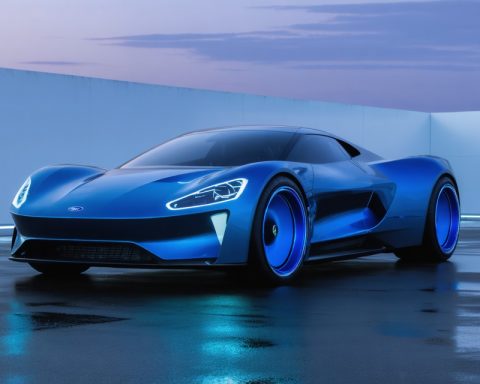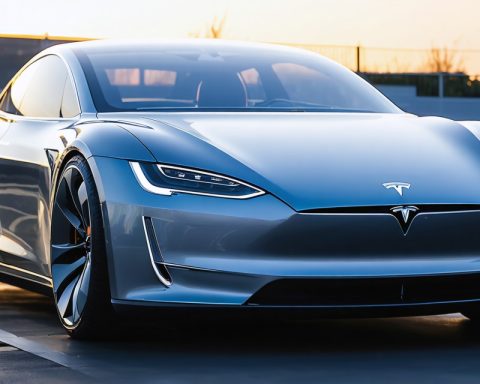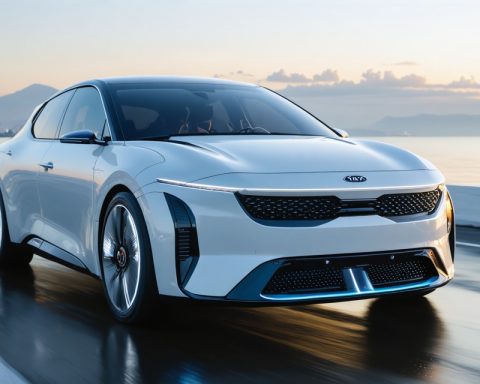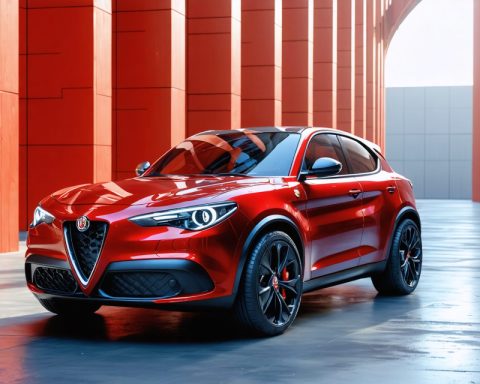- Electric autonomous vehicles (EAVs) redefine mobility by integrating advanced technology with eco-friendly practices.
- Electric vehicles (EVs) significantly reduce carbon footprints with zero tailpipe emissions, addressing urban pollution issues.
- Autonomous driving technology enhances travel by allowing self-navigation and prioritizing safety through real-time environment monitoring.
- EAVs transform vehicles into mobile smart hubs, offering seamless connectivity and integration with digital lifestyles.
- Challenges include adapting infrastructure, legislation, and public acceptance, but the benefits promise a sustainable and intelligent future.
- This innovation symbolizes a new era of transportation, focusing on sustainability, efficiency, and interconnected experiences.
The hum of engines grows quieter as the automotive landscape shifts towards innovation that redefines mobility. Imagine a vehicle that whispers through city streets, runs on silent electric power, and steers itself through traffic with unparalleled precision. The electric autonomous vehicle (EAV) promises not just a journey, but an experience, seamlessly merging advanced technology with eco-friendly practices.
Silent Streets and Eco Dreams
Electric vehicles (EVs) stand at the forefront of this revolution, aggressively reducing the carbon footprint with each passing mile. These vehicles boast zero tailpipe emissions, providing a much-needed answer to urban pollution woes. Imagine an orchestra of electric motors harmonizing with nature, where the only symphony is the gentle rustle of leaves.
Every charge propels us towards a cleaner tomorrow. By adopting EVs, cities can significantly reduce greenhouse gas emissions, making cleaner air and blue skies a reality, not a lofty dream.
The Promise of Autonomy
But the magic doesn’t stop at electricity. Autonomy — the ability for vehicles to navigate without human intervention — promises to reshape our relationship with travel. Picture this: a morning ride where you read the news or enjoy breakfast while your car efficiently and safely maneuvers you through bustling cityscapes. Machine learning and sensors collaborate beautifully, analyzing every facet of the journey to ensure safety and ease.
Safety: A Priority
Safety remains paramount in this transformation. Autonomous systems exceed human capabilities by constantly monitoring the environment, reacting to unforeseen obstacles, and communicating with other vehicles in milliseconds. This intelligence diminishes traffic accidents and enhances road safety, proving technology’s ability to improve lives.
Connected Experiences
The EAV also promises interconnectedness, transforming vehicles into mobile smart hubs. With connectivity at their core, these vehicles offer real-time updates and seamless integration with digital lifestyles. Imagine accessing your calendar, controlling smart home devices, or even conducting remote meetings, all from the comfort of your car.
The Road Ahead
As these technologies evolve, they bring forth challenges: infrastructure adaptation, legislation, and public acceptance. Yet, the potential rewards go beyond convenience — they extend to a sustainable, intelligent future where mobility empowers rather than restricts.
Electric autonomous vehicles symbolize more than a shift in transportation; they herald a new era of innovation and environmental stewardship. The road ahead gleams with opportunity — a journey where technology harmonizes with the earth, crafting a future that promises elegance, excitement, and sustainability all rolled into one.
The Future of Mobility: How Electric Autonomous Vehicles Are Leading the Charge
Unveiling the Future of Transportation
The transition toward electric autonomous vehicles (EAVs) marks a paradigm shift in how we perceive transportation. These vehicles promise not only to introduce groundbreaking technological advancements but also to significantly contribute to environmental sustainability. By integrating electric power and autonomous driving systems, EAVs are set to revolutionize our mobility patterns and influence urban planning and environmental policies.
Understanding the EAV Ecosystem
– Efficiency and Performance: Electric motors are known for their efficient energy utilization compared to internal combustion engine (ICE) vehicles. They convert more than 77% of the electrical energy from the grid to power at the wheels, while traditional gasoline engines only convert about 12%–30% of the energy stored in gasoline to power at the wheels (Source: U.S. Department of Energy).
– Technological Integration: Autonomous vehicles rely on an array of technologies including LiDAR, radar, cameras, and advanced algorithms to navigate and make real-time decisions. NVIDIA and Tesla are leading in developing AI systems for these vehicles, showcasing how real-time data processing can enhance safety and decision-making.
Real-World Use Cases and Market Trends
– Urban Mobility: In cities like San Francisco and Singapore, autonomous shuttles are already being tested to supplement public transportation. These shuttles operate on predefined routes and are gradually gathering data to improve service reliability and efficiency.
– Logistics and Deliveries: E-commerce giants like Amazon are exploring the use of autonomous vans for deliveries. These vehicles promise to reduce supply chain costs and improve delivery efficiency.
Challenges on the Road to Adoption
– Infrastructure Needs: The existing infrastructure requires substantial upgrades, including charging stations and smart traffic systems capable of interacting with autonomous vehicles.
– Legislative Hurdles: Countries around the world need to establish regulations that ensure the safety and reliability of AVs while addressing liability issues. As of now, countries like the UK and Germany have started implementing policies encouraging AV adoption.
– Public Acceptance: While early adopters are enthusiastic, general public trust in autonomous systems needs further development. Studies show that approximately 57% of consumers are skeptical about safety as of 2023.
Life Hacks for Transitioning to Electric Vehicles
1. Incentives and Rebates: Check for government incentives for electric vehicle purchases. Many regions offer tax credits or rebates, making EVs more affordable.
2. Plan Charging Strategy: Understanding charging times and locations will optimize your EV ownership experience. Apps like PlugShare can help locate the nearest charging station.
3. Regular Software Updates: For an autonomous vehicle, ensure that software updates are regularly installed to benefit from improved features and security patches.
Market Forecasts and Industry Trends
– Growth Prediction: By 2030, EVs could constitute over 30% of all vehicle sales, with autonomous vehicles making up a significant portion of that.
– Sustainability Goals: Countries are pushing for sustainability targets, with some European countries aiming to ban sales of new ICE vehicles by 2035.
Conclusion: Embrace the Emerging Era of Transportation
Electric autonomous vehicles are not just a novel innovation but a necessary step toward sustainable living and efficient urban mobility. As technology continues to evolve, the real potential of EAVs lies in their ability to reshape cities into smarter, cleaner, and more connected environments.
For more insights on the evolving future of transportation and technology advancements, visit [Car and Driver](https://www.caranddriver.com) and [NVIDIA](https://www.nvidia.com).
Recommendations for Potential Buyers
– Evaluate Your Needs: Before purchasing an electric vehicle, evaluate your daily driving needs and charging options.
– Stay Informed: Follow news on legislative changes and new advancements in autonomous technology developments.
– Experiment with Rentals: If skeptical, consider renting an EAV for a few days to experience the technology firsthand.




















